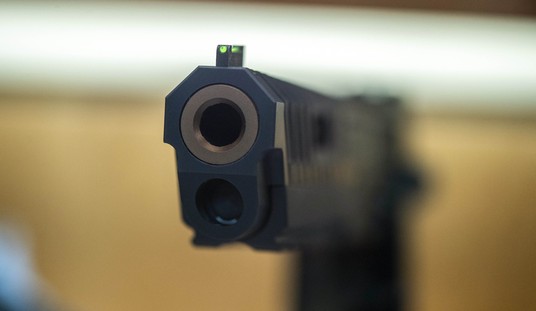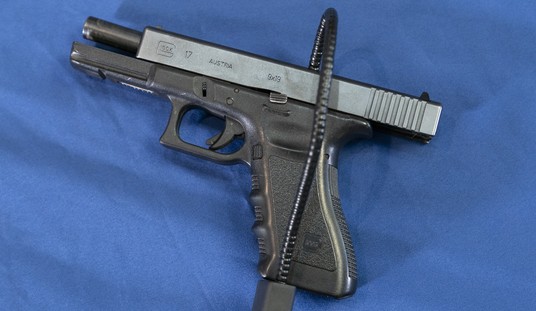We’ve come to expect blatant incompetence from the Washington Post and New York Times regarding firearms, but would hope that western newspapers might be a bit more competent when it comes to giving advice.
It appears that hope was misplaced, as Wyoming’s largest print newspaper, the Casper’s Star-Tribune, utterly bombed with How to Chose a Handgun.
The opening paragraph is painful, if tolerable.
How to choose a handgun
Whether you are new to the firearms market or an experienced collector, choosing a handgun takes consideration and time.
Talking to other merchants and gun owners will give you up-to-date information about the latest models. You might also get some good insights into different brands and models.
Being informed is essential for responsible gun ownership.
While I hate to be the bearer of bad news, most merchants simply aren’t often armed with up-to-date information about the latest models of firearms. This is generally true at big box retailers and dedicated gun stores alike.
The purpose of gun stores (or gun departments in larger stores) isn’t to serve as a testing ground from the latest and greatest toys, but to move the greatest amount of product possible. To move guns, you sell those guns that more consumers will be aware of and trust, and that typically occurs with guns that have been on the market for at least two years. Recalls of firearms are common among early adopters, and most gun stores tend to stick to proven models to avoid customer service headaches.
Other consumers tend to pass along whatever they’ve heard on the rumor mill that passes for “conventional wisdom.” More often than not, that “wisdom” isn’t firsthand knowledge, but something parroted from an internet forum based on something some guy thinks he remembers someone saying shortly before he went to bed six months ago.
I don’t know that I’ve ever encountered truly good advice on the latest models other than, “wait a year, and see what sort of problems that the early adopters are having.”

The next section on “size and caliber” was filled with relatively harmless generalizations, but the section following that verged on negligence for all the half-truths and flat-out false statements that it contained.
Other things to consider
Along with size and caliber, there are other things to keep in mind.
There are two types of handguns: the automatic and the revolver. Automatics are more modern and usually come in smaller calibers, known as auto calibers. Since they are typically clip-fed, automatics are more complicated. They can also be slightly more difficult to clean and operate, but they are fast to fire and easy to reload. Some younger or weaker shooters have difficulties operating the slide which is necessary to load the gun. In those cases, a revolver may be a better choice.
Revolvers are simpler and more traditional. They have been around a lot longer. There are a wide range of calibers and they are easier to clean, but the firing speed and reload time is significantly reduced. Revolvers are great options for beginners. The beauty of a revolver is that when it is needed for self-defense, all that is needed to fire the gun is to pull the trigger, whereas automatics require more steps to prepare to fire.
Point-and-shoot accuracy is more important than sighted accuracy in an emergency situation. In self-defense situations, you’re usually firing fast and instinctively. So it is good to have a gun that reflects your firing style.
Oh, but were to begin with this tangled mess?
There are two types of handguns: the automatic and the revolver.
There are more types of handguns than I can easily name, including automatic (machine pistols), semi-automatic (which is what the unnamed author probably meant), revolvers, single-shots of various designs, and bolt-actions, just to name a few.
Automatics are more modern and usually come in smaller calibers, known as auto calibers.
Oh really? My Google search for “auto calibers” must have come back with different results than that of the author.
Revolvers and semi-automatic pistols are both commonly found in calibers ranging from .22 up to .45, and both have their own monster variants that run up to .50 for hunting use. Caliber is nothing more than the internal diameter of a barrel. I’m frankly not even sure what the author is attempting to say, which I suspect makes at least two of us.
Since they are typically clip-fed, automatics are more complicated.
An author who writes about modern handguns and uses the term “clip” when he means “magazine” is more than likely a non-expert. Clips are pieces of metal shaped to hold cartridges, which may be used to then load magazines.
These terms are not interchangeable.
A generalization that “automatics are more complicated” is simply an unqualified blanket statement of absolutely no worth. Modern semi-automatics are becoming ever more simplified with fewer total parts, and most modern pistols have a simple manual of arms.
They can also be slightly more difficult to clean and operate, but they are fast to fire and easy to reload.
Semi-automatic pistols, having just one chamber, are typically both faster and easier to clean than the 5-8 chambers of a cylinder for a revolver.
Many semi-automatics are slightly faster to fire because of the short reset of the trigger in many semi-automatic pistol designs, but pistols with double-action-only triggers, or with heavy trigger mechanisms (the NYPD’s infamous “New York” triggers) are roughly equivalent to that of a revolver in terms of trigger pull strength required, and length of trigger pull.
Semi-automatics can be faster to load than revolvers, but revolvers can be almost as easy to reload and nearly as fast to reload with the use of speedloaders.
Some younger or weaker shooters have difficulties operating the slide which is necessary to load the gun. In those cases, a revolver may be a better choice.
People who lack the hand strength to operate some semi-automatic designs can easily find other semi-automatics that have difference spring set-ups, which are easier to manipulate.
Those people who lack the hand strength to rack the slide of most semi-automatics will also find that they typically lack the hand strength to fire a double-action revolver competently. They need to engage in some sort of hand-strengthening exercises, period.
Revolvers are simpler and more traditional.
Half-right. Maybe. Sometimes.
They have been around a lot longer.
The widespread use of double-action revolvers did not greatly predate the basic actions of mass-market semi-automatic pistols. Many of today’s double-action revolvers are actually decades younger than that of classic semi-automatic designs.
There are a wide range of calibers and they are easier to clean, but the firing speed and reload time is significantly reduced.
As noted previously, revolvers have 5-8 chambers to clean, whereas semi-automatics have one. Firing speed depends on the trigger mechanism, and reload time isn’t greatly different with the use of speedloaders, which have been around for decades.
Revolvers are great options for beginners.
Because of their long and heavy double-action triggers, it is harder for beginners to learn to shoot a revolver accurately than it is to teach them to shoot a semi-automatic accurately.
When semi-automatics malfunction, most malfunctions are cleared with a simple “tap-rack-bang” drill. When revolvers malfunction, they are typically far more serious and may require a gunsmith to repair.
The beauty of a revolver is that when it is needed for self-defense, all that is needed to fire the gun is to pull the trigger, whereas automatics require more steps to prepare to fire.
Really?
Firing a revolver.
- Press the cylinder latch.
- Swing out/expose the cylinder empty.
- Load a cartridge into the chamber (Repeat 5-8 times).
- Close the now loaded cylinder.
- Acquire a firing grip.
- Aim, and squeeze the trigger to fire a shot.
Firing a striker-fired pistol.
- Press the magazine release.
- Prepare the magazine by pushing down on the follower and seating a bullet (repeat 5-20 times).
- Place the prepared magazine into the magazine well of the pistol.
- Rack the slide to load a round into the chamber.
- Acquire a firing grip.
- Aim, and squeeze the trigger to fire a shot.
Point-and-shoot accuracy is more important than sighted accuracy in an emergency situation.
A completely unsupported blanket statement. The reality is that every professional firearms training school teaches aimed fire using the firearm’s sights as the primary method, whereas point shooting is used in extreme situations.
In self-defense situations, you’re usually firing fast and instinctively. So it is good to have a gun that reflects your firing style.
In high-stress situations, research and real world experience both show that shooters default to their level of training, which becomes instinctive with enough good practice.
Unaimed, fast, and wild fire that misses will not solve your problem, and may create new ones. It may also possibly get you killed if your opponent is armed and take the time to use their sights to aim, as you stand there with an empty firearm.
Your “firing style” is a reflection of your training, nothing more or less.
Do you have a headache yet?
Fortunately, the concluding “Warnings” section is gun safety boilerplate that the author has managed to replicate without mangling.
I’m not sure who the Casper Star-Tribune’s author is, but they could certainly benefit from much more firearms education before they misinform their readers.
Update: Did local gun shops take part in this train wreck?
@bob_owens Thanks for your feedback. We worked with several vendors for this special ad section. We'll take your comments into consideration
— Casper Star-Tribune (@CSTribune) April 1, 2014










Join the conversation as a VIP Member